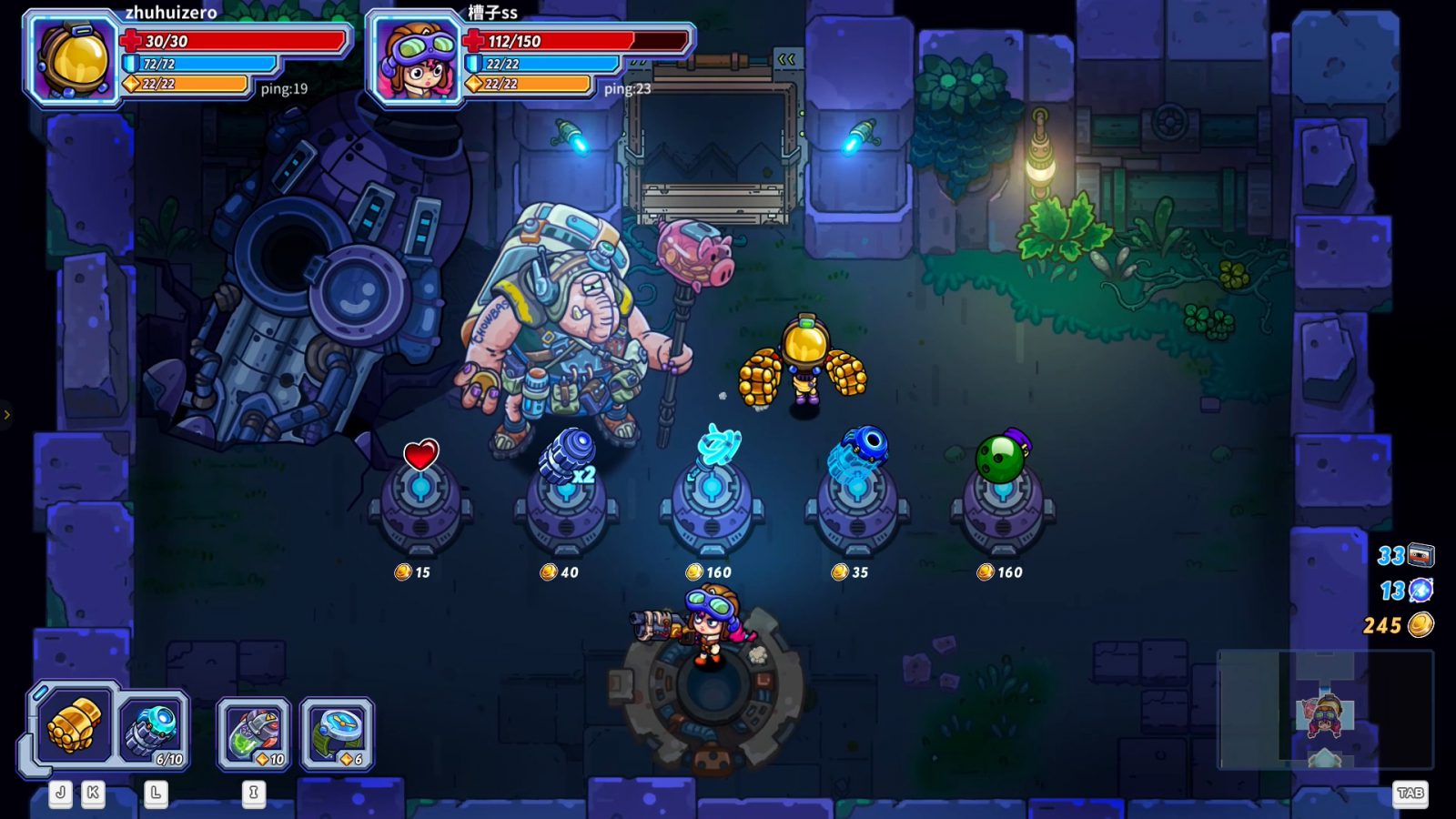You and your battalion are gradually getting lost in a dungeon. Being low on the potion, you and your team’s energy are dropping. You are completely unaware of what is coming next. There can be a dragon lurking from behind or a hidden chamber full of treasure.
Somewhere between brainstorming action, captivating adventure, gameplay intensity, and repetitiveness, here stands Roguelike video games with its hardcore fan base and growing popularity. Long after the other video game genres like Action, Shooter, RPG, Adventure, Horror, etc., emerged with a full-fledged shape in the video game market, enjoying the blinding light of fame, Roguelike games have become mainstream.
Recently, the demand for metaverse development services and metaverse gaming are on the rise, enabling players to immerse themselves in the gaming world and magnify their gaming experiences. Imagine playing exciting roguelike games in the metaverse world. How does it sound? Thrilling, isn’t it? However, for game designers, it is a little bit tricky and challenging to design and develop Roguelike video games for the metaverse.
The combination of extreme stress, exploration, and interesting gameplay mechanics lead the gamer to Roguelike Renaissance. The rising popularity of Roguelike games and the metaverse seem tempting to game designers to concentrate on merging Roguelike game design with the metaverse elements. Let’s take a closer look at the core design elements of Roguelike games to get an idea of how it differs from other video game genres.
Taking a Closer Look at Roguelike Video Games for the Metaverse?
Although Roguelike games have reached the paradigm of popularity in the past few years, they have been here since the 80s’. During the 1980s, with the advent of the game Rogue, Roguelike games emerged as the sub-genre of Role Play Games and Strategy games. Much like Dungeons and Dragons, in Roguelike games, the players take charge of a knight to explore the different chambers of the dungeon to find the ultimate treasure.
Roguelike video games are a proportionate mixture of Action, Adventure, turn-based Strategy, and RPG video games based on single-player or multi-player gameplay. This kind of video game is associated with dungeons and the permanent death of the character. Each time the character dies, the player needs to restart the game from scratch. Sometimes the designers prefer medieval settings as the video game art design, while many choose science fiction as the theme of the Roguelike game.
On the other hand, metaverse gaming is a new technology trend that leverages immersive technologies (AR, VR) and blockchain. The business model of metaverse Gaming involves the development and sale of games, content, and tools to the metaverse gaming community. The metaverse platforms provide players with a range of online gaming experiences. They also allow users to create game characters, buy game assets and sell game items. Roguelike video games for the metaverse will undoubtedly amplify the gamers’ experience while indulging themselves in Roguelike gameplay. In the metaverse gaming platforms, the action and adventure of Roguelike gameplay will get enhanced.
For example, The inclusion of NFTs into action and RPG gameplay intensifies gaming experiences. Game studios are partnering with NFT development services to design and include NFTs as a part of their video games. Likewise, the merging of Roguelike games and the metaverse will bring big waves of pleasure and excitement to the gaming world.
Characteristics of Metaverse Roguelike Gameplay And Design
As we have already stated that Roguelike games are partially similar to RPGs, Action, Adventure, and turn-based Strategy. But, what does make the design of the Roguelike video games for the metaverse different from these mentioned video game genres? Following are some of the predominant characteristics that make the Roguelike video games for the metaverse stand out among the crowd.
The Basic Gameplay
The basic gameplay of a Roguelike video game boils down to the player’s taking hold of the main character to explore the dungeon and find out the treasure. The presentation must be unique each time. No matter if the gamer plays the same level twenty times, the experience must be free from repetitions.
Moreover, the designer needs to provide opportunities for the player to discover loot, secret potions, arms, etc., to make himself all equipped before entering the dungeon. The ending of the game follows the player arriving at the end of the dungeon, face-to-face combat between the hero and the villain, and walking off with the treasure.
Permanent Death of The Character
Permadeath is not something players get familiar with in other video game genres in the metaverse. In the rest of the video games, there are checkpoints, safe spots, and challenges. But, players never lose valuable things like life.
In Roguelike video games for the metaverse, once the player loses a life in the playthrough, he has to start over the game from level one. It is one of the most prominent characteristics of Roguelike game art design. The random environment of the gameplay makes this start-over enjoyable rather than a punishment.
Random Nature of Game Environment
Procedural generation is the life force of Roguelike games. It enhances the replay ability of the game. In these games, everything gets generated randomly. For instance, the physical appearance of the monsters or villains is unalterable, but they can appear from different spots each time you replay the game.
In addition to that, gamers can immerse themselves in the gameplay through avatars. Game studios can include fascinating avatars partnering with metaverse development services. It will, no doubt, intensify the players experience dealing with the elements and background of the Roguelike gameplay.
Grid-based and Turn-based Gameplay
The designer set the entire world of a Roguelike video game on a grid of tiles. Additionally, the gameplay mechanism is not time-sensitive. One in-game command equals one action.
Progression
In Roguelike games, character progression implies the player’s going forward into the chambers of the dungeon. After accomplishing each level, the character makes progress to the final hidden chamber of treasure. Moreover, the gameplay mechanism is not time-sensitive. One in-game command equals one action.
Final Words
Roguelike video game is one of the most prominent and promising game genres. And Roguelike video games for the metaverse will undoubtedly thrive across the metaverse gaming platforms. Whether you are a game-designing newbie or a seasoned video game designer, it always helps to learn how to design a Roguelike game on your own feet.
Read More:- What is IT staff augmentation and its benefits




